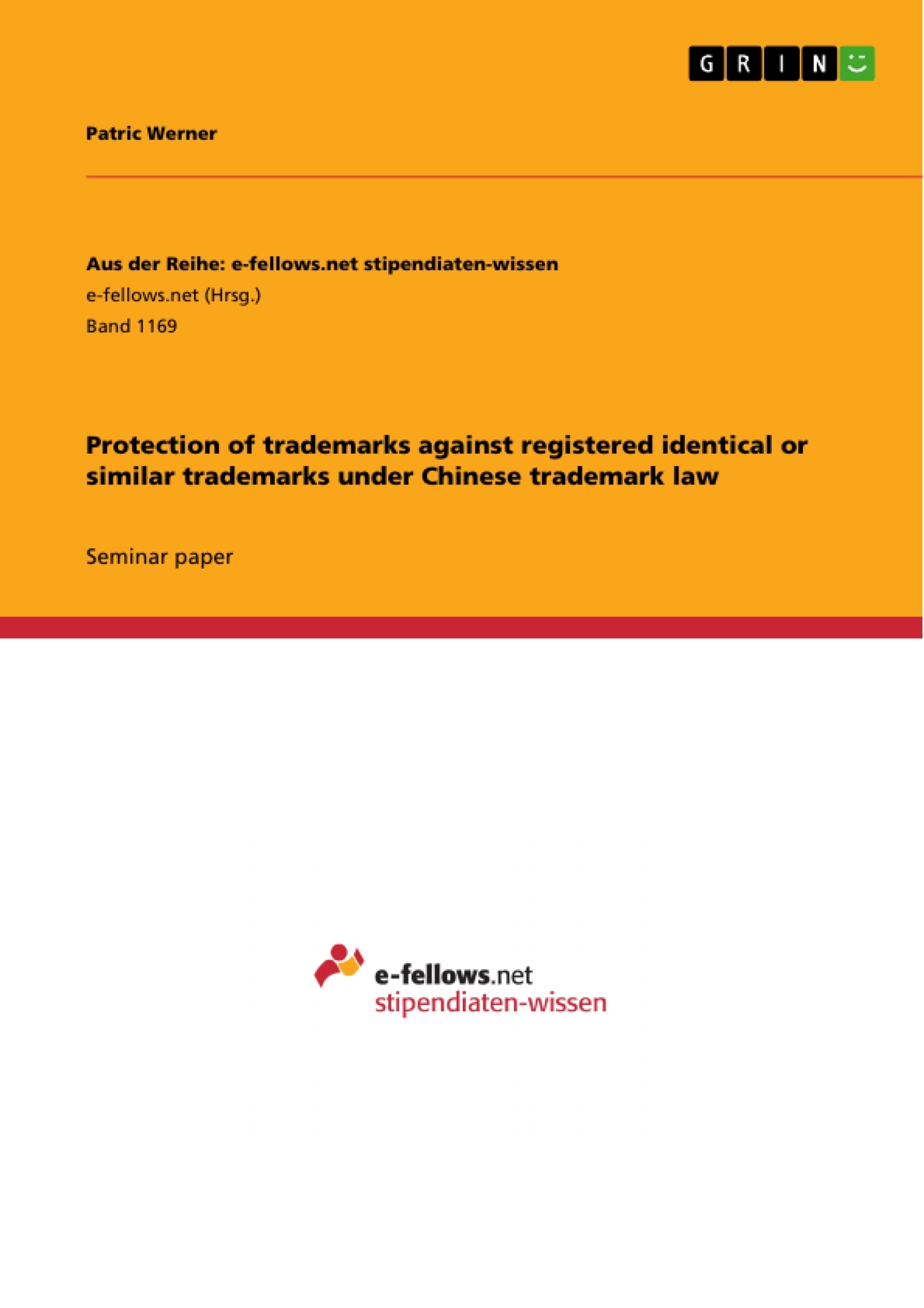It is an international standard in trademark law that the scope of protection for a trademark that has obtained the status “well-known” is supposed to reach beyond the scope of protection of regularly registered trademark that is not well-known.
In the People’s Republic of China (PRC), recent developments in Trademark Law are expected to strengthen the protection of well-known trademarks to an extend that deems this author to examine the relationship between a well-known trademark recognized in China and another parties identical or similar trademark that has been registered with the trademark office.
Inhaltsverzeichnis (Table of Contents)
- A. What is a well-known trademark in China.
- I. Introduction to well-known trademarks.
- II. Overview of Chinese well-known trademark protection.
- 1. Trademark rights based on registration
- 2. Recognition case-by-case
- a) Shift from active certification to passive certification
- b) Time limits on well-known trademark certification.
- c) Dual-track system.
- d) Presumption and proof of well-known status
- e) Determining what trademark is well-known
- aa) Requirement of high reputation
- bb) Well-known outside of Mainland China
- f) Local trademark offices.
- 3. Bad faith
- a) Art. 31 alt. 2 of the Trademark Law of 2001.
- b) Opposition to the CTMO.
- c) Deletion upon request to the TRAB.
- d) Conditions of well-known status or agent application?
- e) Expanded Protection under art. 44 new Trademark Law
- B. Conflicts with Prior Rights
- I. Registered Trademarks as prior rights.
- 1. Identical or similar products or services
- 2. Dissimilar products or services.
- II. Registrations obtained prior to the new Trademark Law
- C. Thoughts on the Wanglaoji (E)-Case
- D. Conclusion
Zielsetzung und Themenschwerpunkte (Objectives and Key Themes)
This paper examines the protection of well-known trademarks against identical or similar trademarks that have been registered in China. It explores the relationship between a well-known trademark and a registered trademark, considering the recent developments in Chinese trademark law. The paper aims to analyze the scope of protection for well-known trademarks in China, particularly in light of the new Trademark Law and its implementing regulations.
- The legal framework for well-known trademark protection in China
- The impact of the new Trademark Law and its implementing regulations on well-known trademark protection
- The challenges and opportunities for well-known trademark owners in China
- The relationship between well-known trademarks and registered trademarks
- The role of bad faith in trademark registration
Zusammenfassung der Kapitel (Chapter Summaries)
The paper begins by defining what constitutes a well-known trademark in China, referencing relevant international agreements like the Paris Convention and TRIPS. It then delves into the overview of Chinese well-known trademark protection, discussing the shift from active to passive certification, time limits, dual-track systems, and the criteria for determining well-known status. This section also explores the concept of bad faith in trademark registration and its implications for well-known trademarks. The second chapter focuses on conflicts with prior rights, analyzing the protection of well-known trademarks against identical or similar trademarks for both similar and dissimilar products or services. The paper further explores the implications of trademarks registered prior to the new Trademark Law. The third chapter discusses the Wanglaoji case, a prominent example of a well-known trademark dispute in China. The paper concludes with a summary of the findings and insights gained from the analysis.
Schlüsselwörter (Keywords)
This paper focuses on the key concepts of well-known trademarks, trademark protection, trademark registration, bad faith, prior rights, and the new Trademark Law of China. It explores the legal framework for protecting well-known trademarks in China, analyzing the various aspects of the law and its practical application. The paper also examines the impact of recent developments in Chinese trademark law on the protection of well-known trademarks.
- Quote paper
- Patric Werner (Author), 2014, Protection of trademarks against registered identical or similar trademarks under Chinese trademark law, Munich, GRIN Verlag, https://www.grin.com/document/295814



